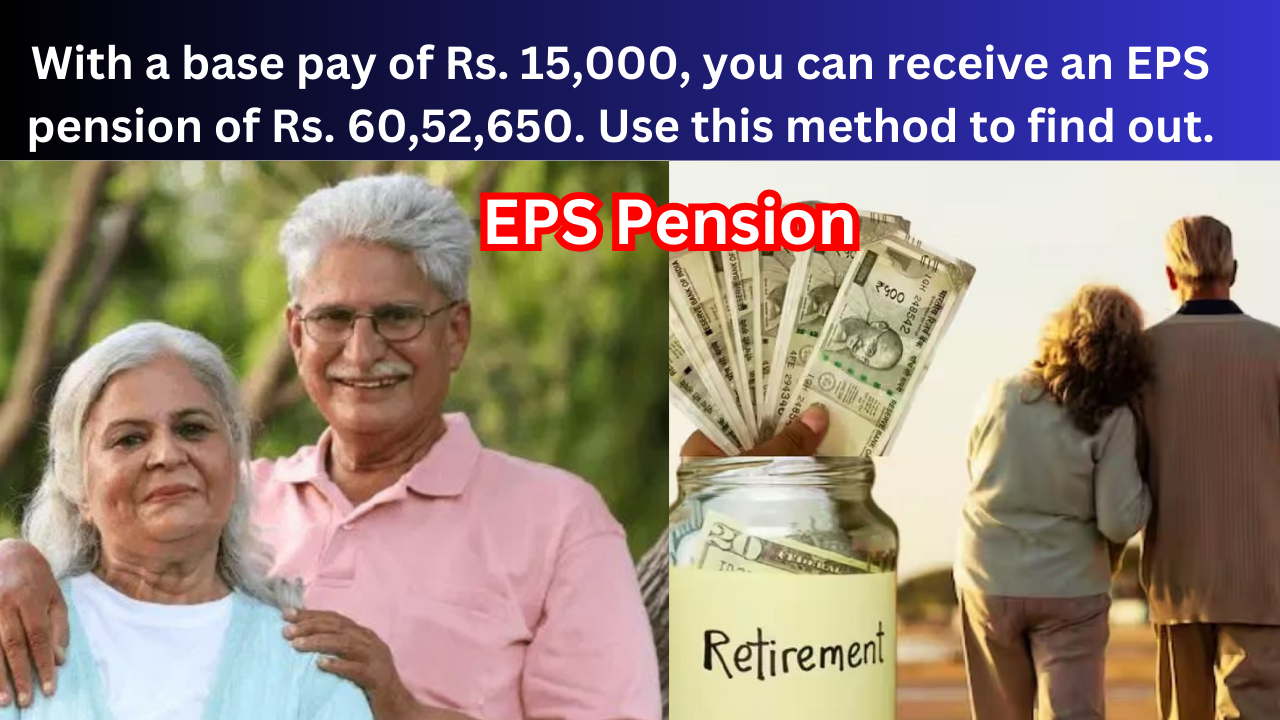EPS Pension: In order to be eligible for this pension under EPS, an employee must work for EPS for a minimum of ten years and contribute to the program for ten years. In addition, a person can only have 35 years of pensionable service. Allow us to present the formula that will allow you to determine your post-retirement pension amount.

The Employees’ Provident Fund Organization (EPFO) oversees the Employee Pension Scheme (EPS), a social security initiative. When workers in the organized sector retire at the age of 58, this system pays them a pension. The EPF plan is open to participation from both new and current members.
However, in order to take advantage of this pension option under EPS, the individual must work for a minimum of ten years and contribute to EPS for ten years. In contrast, a person’s maximum pensionable service is 35 years. Allow us to present the formula that will allow you to determine your post-retirement pension amount.
EPS Pension , Formula for calculating EPFO pension
You will receive an EPS pension, which is determined by a formula.
EPS = Average Salary x Pensionable Service/70 is the formula.
Here, “average salary” refers to base pay plus DA. This is computed using data from the previous 12 months. The maximum tenure for pensions is 35 years. There is a maximum pensionable wage of Rs 15,000 per year. As a result, the maximum pension share is now Rs 15,000 × 8.33 = Rs 1250 monthly. If we comprehend the EPS pension computation in this case, which is based on years of service and maximum contribution, then EPS = 15000 x 35/70 = Rs 7,500 each month. In this manner, EPS allows for the highest pension of Rs 7,500 and the lowest pension of Rs 1,000. This calculation can also be used to determine how much your pension will be.
Employers contribute 3.37% of an employee’s pay to the Employee Provident Fund (EPF) and 8.33% to the Employee Provident Fund (EPS). For FY24–25, the interest rate is 8.25%. Both the employer and the employee will contribute a total of Rs 2,350 to the EPF account.
Here's an example to help us comprehend this:
Let’s say a worker started in April 2024 and received a base pay of Rs 1,5000 from the corporation. The entire April EPF contribution is scheduled to be Rs 2,350. The EPF plan will not be paying interest in April.
The entire EPF contribution for May is going to be Rs 4,700 (Rs 2,350 + Rs 2,350). This will incur interest of Rs 32.31 (Rs 4,700 * 0.689%). This computation will continue till the worker retires.
What pension will you receive on a basic salary of Rs. 15,000.
Monthly pay = Rs 15,000 (Basic + DA)
12% of base pay is contributed to the EPF.
Age as of right now: 25
The total amount you invested will therefore be Rs 10,15,416. There would be Rs 50,37,234 in interest. The entire sum that you would receive is Rs 60,52,650.
The computation is predicated on an interest rate that is 8.25 percent at this time, but it could vary later. Leap year may also affect the real returns.

